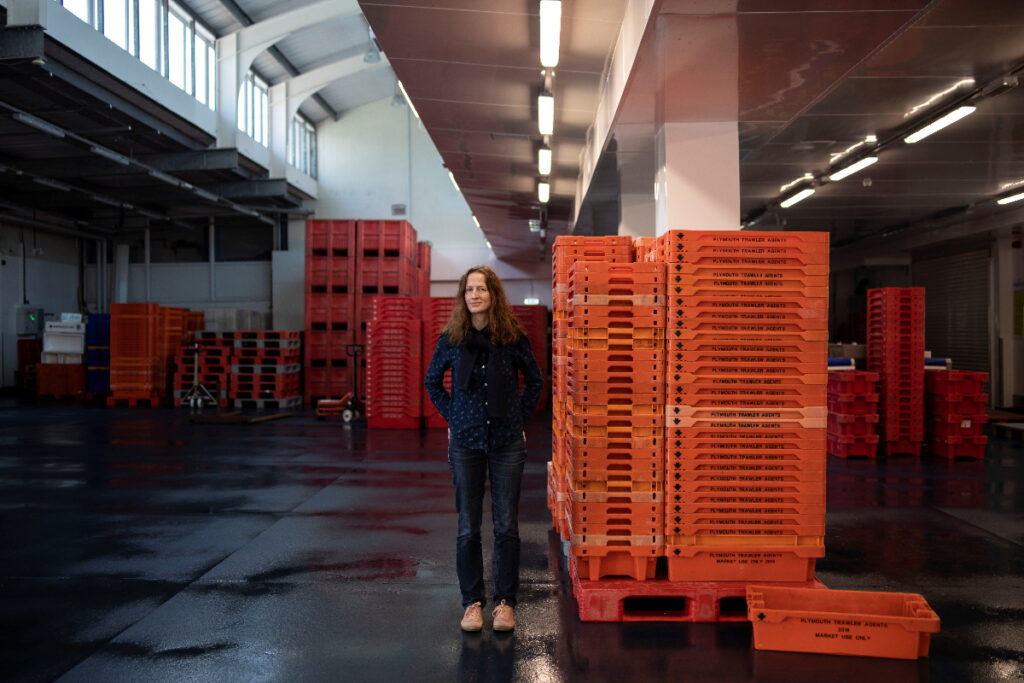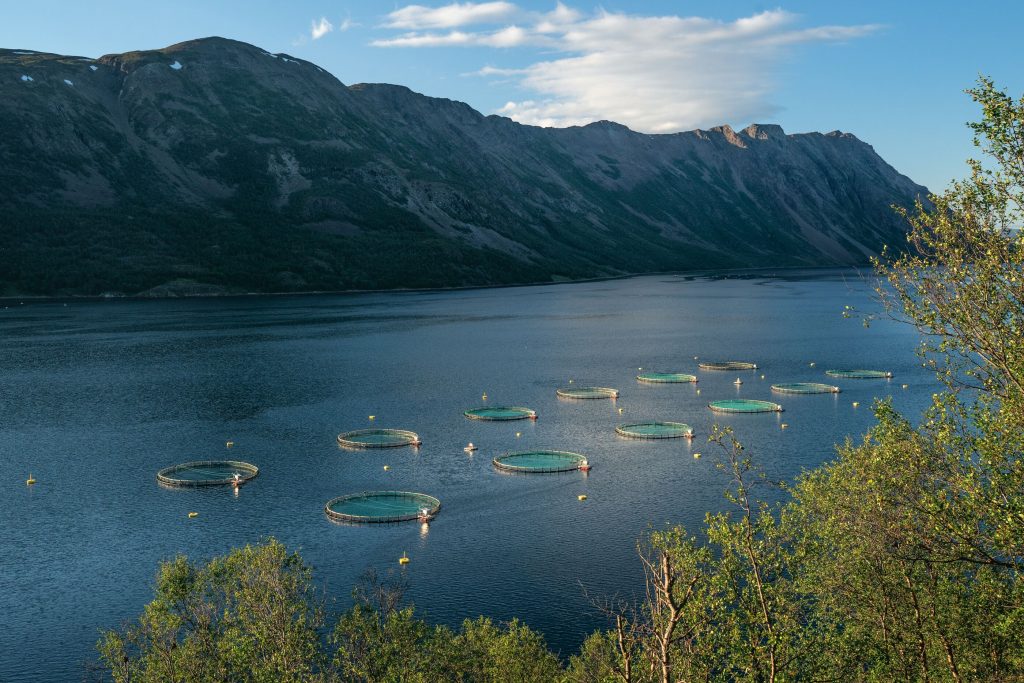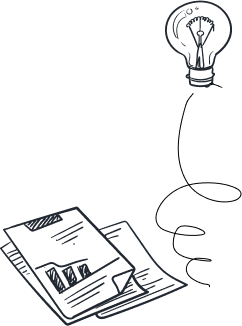Where to order sustainable Christmas food 2025: Direct farm deliveries from the UK’s top producers
Christmas is renowned for being the most indulgent time of year, especially when it comes to food. An estimated 25% of smoked salmon is sold over the Christmas period, elevating everything from scrambled eggs at breakfast to canapés with cream cheese. Bar from a turkey and Christmas pudding, it’s increasingly becoming one of the most synonymous foods of the festive period.
Instead of being the luxury and healthy choice that it’s often touted as, what’s worrying about this, is that almost all of the smoked salmon we buy in supermarkets is farmed, which has many ethical and environmental issues.
The truth about Scottish smoked salmon
Yet, this isn’t obvious because the endlessly murky world of food labelling makes it virtually impossible for shoppers to know what we’re actually buying. For example, many of us think buying Scottish seafood supports the UK economy, and is a local, high-welfare luxury food. The reality is, most salmon farms are now foreign owned.
Plus, Scottish salmon producers won a court case to remove the word “farmed” from their packaging in 2024. Instead, labels will say “responsibly sourced”. However, with salmon dying at staggering rates of more than 80% before they are harvested for food, this term is open to interpretation.

The lone fishmonger, pioneering ethical smoked salmon
Helping to change this and provide truly ethical options is restaurateur and pioneering fishmonger, Caroline Bennett. She has just been featured in The Independent Climate 100 List 2025, for her leading environmental work in the fishing industry.
Caroline created online fishmonger Sole of Discretion in 2016 after finding it impossible to source ethical fish for her London sushi restaurant, Moshi Moshi. Sole of Discretion pioneered a fully traceable supply chain. They work with small day boats and ensure the name of the boat and skipper, plus the catch method and location, is included on the packaging. This way customers know where it comes from and who caught it.
This year, Caroline is creating her own wild smoked salmon, to encourage consumers to move away from farmed smoked salmon. Using wild Coho salmon (line caught from Alaska), Caroline cold-smokes the fish in a kiln on Plymouth fish market’s harbourside.
Caroline uses oakwood chips and organic sea salt to smoke the fish, following the method she was taught by fellow Slow Food member and expert Sally Barnes, owner of Woodcock Smokery, based in West Cork, who has been doing it for 45 years. It’s a true artisanal product that’s a far cry from the intensively farmed system.

Why wild salmon is better for the environment
Buying wild salmon is much better for the environment, and for us, in many ways. Firstly, there’s no intensive farming system. “Obviously, in the wild, nature does everything for you. It’s fed the animal, it’s housed the animal – all you have to do it is catch it. Then you’ve got a very sustainable piece of animal protein on your plate,” says Caroline.
“There’s so little wild Atlantic salmon now, that most of it is Pacific wild salmon that usually comes from Alaska or Japan,” she explains. It’s estimated there’s as little as 300,000 Atlantic salmon left in the wild. Numbers have declined by about 70% in Scottish rivers since 2000, according to charity Wildfish, which says the rise of salmon farming in Scotland is mostly to blame.
Of course, how salmon is caught matters, too. Sockeye salmon is “usually caught by gillnet from dinghies. The nets span across the river and the fishers are usually wading, so it’s very low carbon,” says Caroline. Keta and Coho, which usually come from Alaska, are mostly caught by hook and line and sometimes netted.
The benefits of wild salmon
And when it comes to health and nutrition, wild salmon is packed with more omega-3 and fatty acids, which are good for your heart and brain, along with vitamins like B-12 and D. It’s leaner in fat, owing to its natural diet and ability to be more active as it’s not in a small cramped pen.
It’s also easy to recognise as it’s a more of a deep orange or red colour. This in contrast to the pale pinky orange of farmed salmon, which has recognisable thick white marbled lines through it. We’re taught that marbling is a sign of good quality in beef, but this is not the same with salmon.

How farmed salmon became the world’s fastest growing food industry
The farmed salmon system only began in the 1970s, but has grown exponentially to become the world’s fastest growing food industry. With it, the problems are growing too.
“The biggest issue is still what the farmed salmon is fed,” explains Caroline. Feed, which is known as fishmeal, is made from smaller fish, such as herring, sardines or anchovies, which could be used for human consumption.
This mis-use of resources has a wider impact when extracted from countries like Senegal in west Africa, (one of the world’s leading fishmeal producers). It takes the food from the bottom of the food chain, creating a potentially devastating problem for local people. The fish numbers decrease, and not only is there less food for them to eat, but also a loss of fishing industry serving local communities.
It also takes a lot to feed farmed salmon. “Back in the bad days, 12 kilos of wild fish were needed to produce one kilo of farmed salmon,” Caroline says. She adds that’s now apparently down to as little as one-to-one, but she’s still rather sceptical at the optimism. “Of course, farmed salmon companies say the reduction is because they’re concerned about the welfare of the world’s fish stocks. But ultimately, it’s because fish stocks have plummeted and prices have gone through the roof,” she adds.

The pollution issue
As the salmon are trapped in such a small space, all the pollutants from the farm build up on the sea bed. This includes left over feed, excrement and many chemicals used to treat the problem of parasitic lice (which can transfer to migrating wild fish) and other diseases, which also pollutes the water too. The idea is the tides are meant to help move this. But, the fish are so intensively farmed now, the tides aren’t able to move the amount there is.
In the UK, antibiotics use has increased in recent years, but Caroline says “there are many other places around the world where standards are even lower. If you’re eating Chilean farmed salmon antibiotic use is quite prolific”. Chile is now the world’s second largest salmon producer.
As well as the food and pollutant issues, “the death rate is extraordinary,” says Caroline. “If you saw any fields of cattle or sheep with so many dead, it wouldn’t be permitted,” she adds. But as it goes on underwater, unseen, it’s lawful. Wildfarmed, says an estimated 25% of all farmed salmon dies prematurely which is widely reported to be caused by diseases and warming sea temperatures.
Spreading disease
If these dead fish aren’t properly dealt with, wild fish outside of the pens can eat them too. This spreads the disease to an already vulnerable population of Atlantic salmon, which can be detrimental for the wild species too.
Following storms in early October, an estimated 75,000 farmed salmon escaped into the wild in Scotland’s Loch Linnhe after their pens (some of which can have up to 200,000 fish inside) were battered in the bad weather. This level of escape into the wild is thought to cause long-lasting damage to the wild Atlantic salmon, which are already classified as being endangered. The problem is only expected to become worse as storms become more frequent and more volatile because of the climate crisis.

Wild smoked salmon as an alternative
Positively, Caroline thinks there is more smoked wild salmon available now compared to even just two or three years ago, though consumers have to look hard for it, as most smoked salmon in shops is farmed.
She acknowledges that you need to be the change you want to happen. “If you don’t offer the alternative, it’s really hard to criticise consumers for not doing the right thing. You’ve got to offer the alternative.” Yet again, she’s plugging the gap in the market.
Buy Sole of Discretion wild smoked salmon:
Wild Coho Salmon: Cold smoked on oak, 150g sliced: £12
Photos in main image: Hanna Collins Photography


